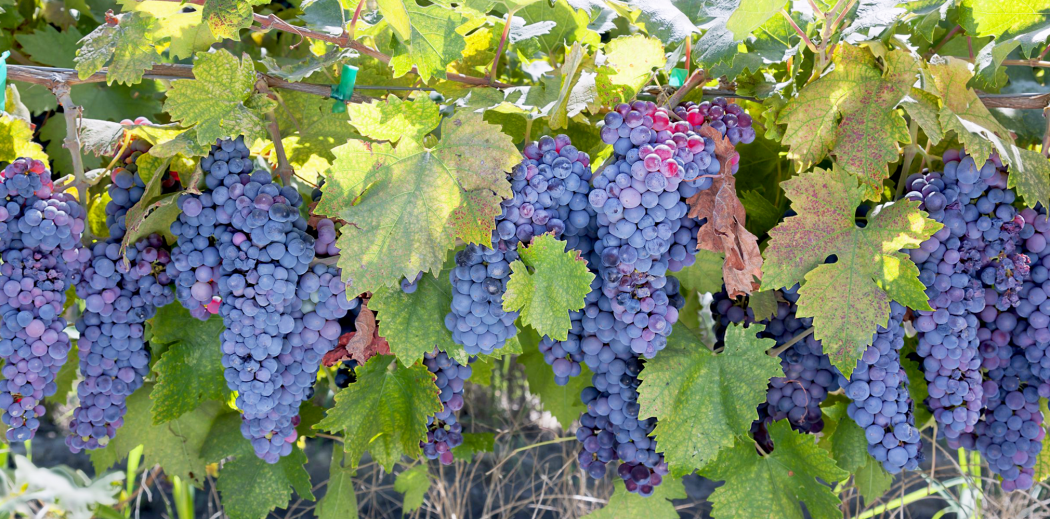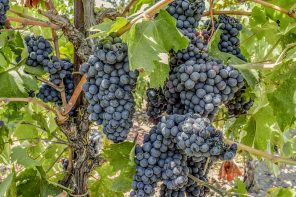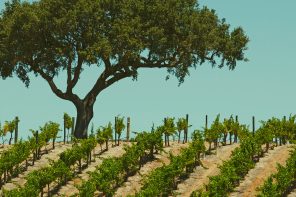For many, many decades Zinfandel was thought to be America’s very own noble grape. Arriving on the East Coast, it made the cross-country trek to California by the mid-1800s along with gold bug bitten 49ers. Well-suited to the warm Mediterranean climate, it quickly established itself as a top wine grape. As various viticultural obstacles like Prohibition and the Great Depression befell the nation, Zinfandel’s roots were lost to the mists of time and people were satisfied to call it as American as baseball and apple pie.
But seeds of doubt began to grow. Historians did some detective work and found records showing that Zinfandel was first imported from an Austrian nursery sometime in the early 19th century. For a long time, that was as far as they got. By the 1960s, theories abounded that the grape was same as the Italian Primitivo. Ampelographers compared the two and noted that Zin looked an awful lot like Primitivo, enough to declare them one in the same. It took until the ’90s and advances in grape genetics for real confirmation. Comparing DNA from the two varieties, a team of geneticists was able to determine beyond a shadow of a doubt that Primitivo and Zinfandel are in fact clones of the same variety.
The story doesn’t stop here. During the 1970s, it had been theorized that Primitivo was an Italian clone of the Croatian grape Plavac Mali. Although this didn’t turn out to be the case, researchers did discover Zin was a parent to this variety, which drove them to cast their nets wide and see if perhaps there wasn’t a bit of truth in the idea that Primitivo/Zinfandel was Croatian. After scouring the Dalmatian Coast and comparing DNA from local vines, the dawn of the new millennium saw the discovery of the missing link, the pre-Primitivo Crljenak Kaštelanski. Also known as Tribidrag, Zinfandel was confirmed to be Croatian and cultivated since at least the 15th century.
But how did it come to be a sort of modern-day poster child for Californian wine? While many other vines were uprooted during Prohibition, Zinfandel found a niche in the homemade wine market, a legal loophole and ray of light in those dark times. In the jug wine post-war days of the weakened US wine industry, Zinfandel fell to the wayside and probably would have stayed there if it weren’t that wine people love to hate, White Zinfandel.
For anyone out there who has ever made a snide comment about White Zinfandel, it’s time to shush. Cheap and cheerful though it may be, it’s thanks to the sweet, fruity blush that many of California’s old Zinfandel vines got a stay of execution. There’s no getting around the fact that winemakers are going to plant whatever is most lucrative: Cabernet Sauvignon, Pinot Noir, Chardonnay…the usual suspects. Producing wine is expensive, so on the one hand, it’s easy to sympathize. But there are casualties to this pursuit of profit. Across the globe, both old vines and indigenous grape varieties which grow nowhere else in the world have been uprooted in favor of the popular international varieties and disappeared forever. And so it would have been for California’s Zinfandel vines, some of which are upwards of one hundred years old, if it hadn’t been for the exceptional popularity of White Zin in the ’70s and ’80s.
Today the interest has shifted to making premium old vine reds from the grape. In 2015, Zinfandel was the second most planted red grape in California after Cabernet Sauvignon according to the California Department of Food and Agriculture’s annual grape acreage report. Outside of the States, Italy is the other major country for the grape, and both regions made wines across the entire range of dry-sweet. However you like to drink it, Italian, Croatian, rosé, late harvest, old vine, or out of a box, Zin is a winner, a California classic that like many American greats, has international roots.









Always nice to read about Zinfandel. I’ve been a fan for decades.
One quibble: the phrase is “one and the same.”
Kudos for using variety rather than varietal.
PLEASE. it’s “one and the same” NOT “one in the same”. This is one of the many common expressions that are often mangled.
I almost stopped reading right there. I’m glad I didn’t, very interesting article, and I love Zins (the deep dark reds!).